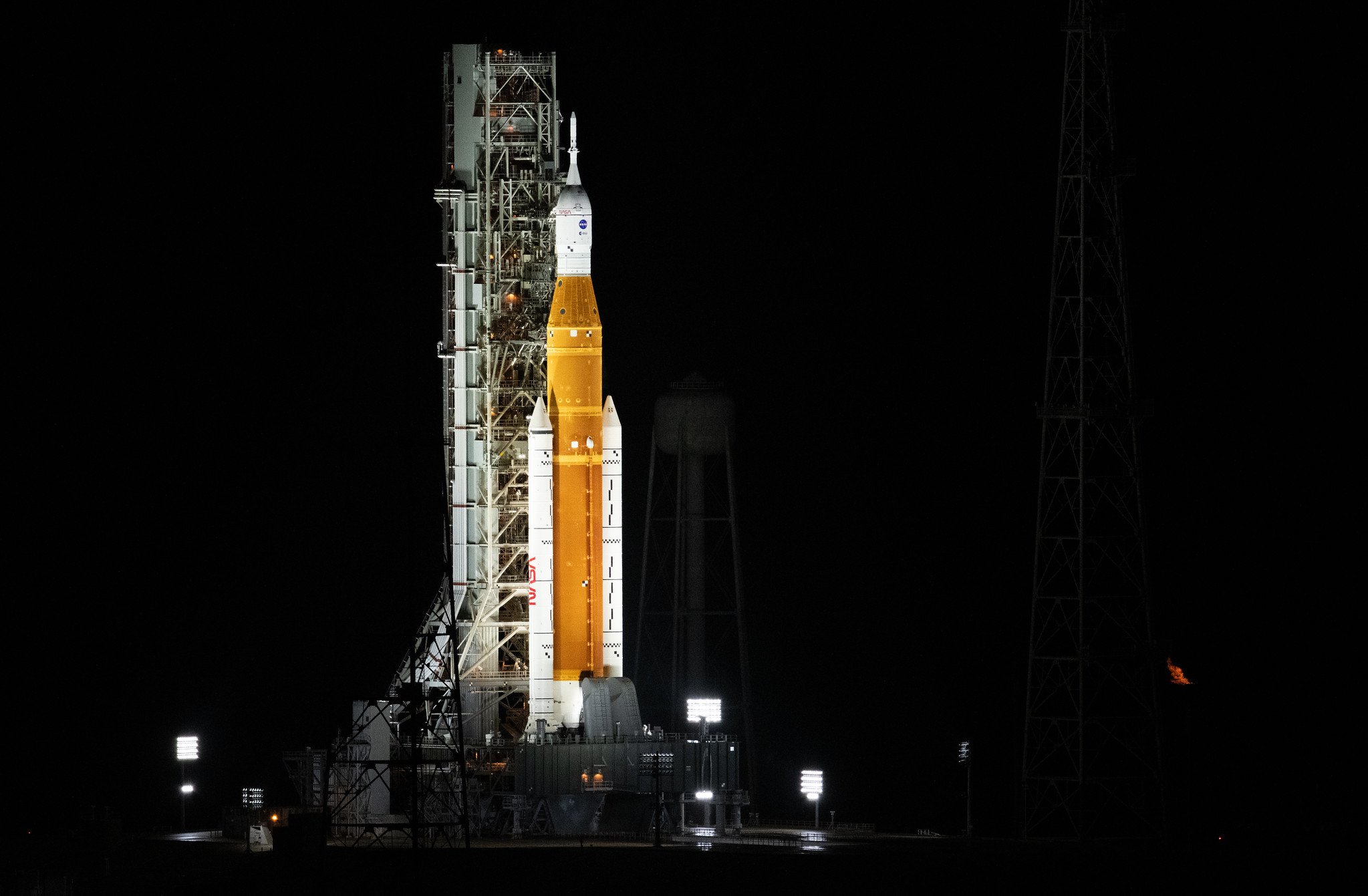NASA’s Artemis missions - SLS and Orion - are costing a fortune compared to SpaceX’s Starship
Our plan was to publish this article after Artemis 1 had just blasted off. But the first attempt was scrubbed because of an engine issue, and yesterday’s second “go for launch” was abandoned due to a hydrogen leak in the fuelling system. NASA have announced that they’re not going to try again on Monday, so it’s likely that we’ll now have to wait until mid-September or more likely mid-October, (if not longer). When it does finally lift off, the aim of this uncrewed mission is to test that the Space Launch System (SLS) and Orion capsule can safely transport astronauts to the Moon and back again in the near future.
If anyone’s scratching their head at this objective, you’d be correct in doing so. After all, NASA successfully landed 12 men on the surface of the Moon with the Apollo missions between 1969 and 1972 - more than 50 years ago. They’ve done very little else since, in terms of manned missions, merely staying within low Earth orbit. To someone like myself, who avidly watched the Apollo Moon landings on a black and white television screen as a boy, it’s been extremely disappointing.
Artemis 1 on the launch pad (Credit: NASA)
On their website, NASA don’t even start by saying “We’re going back to the Moon!” - let alone apologising for dulling down our enthusiasm for half a century. Instead, they immediately virtue signal compliance to the woke agenda, announcing: “NASA will land the first woman and first person of color on the Moon.” Sexism and racism are, of course, expressions of hurtful stupidity. And I totally understand the arguments that have been made for so-called affirmative or positive action. But this stance still boils down to staying within the arena of discrimination, and I’m sceptical if the way to end all discrimination is by discriminating. I’d prefer we now moved forward, with anyone and everyone chosen for a mission purely on the basis of being the very best for the task.
Artemis 1 and the Moon (Credit: NASA)
So, if you’re someone who leaps to conclusions before reading further, you’d be forgiven for mistakenly believing that NASA is going back to the Moon just to land the first woman and first person of colour on its surface. Thankfully, NASA quickly points out that the mission aims are “scientific discovery, economic benefits, and inspiration for a new generation”. And, working on the principle of “better late than never”, it’s good that NASA is doing what it’s doing. Along with China, who aren’t far behind.
The massive amounts of money that have been spent on this latest space venture are staggering. NASA began developing SLS in 2011, with a budget of $10 billion and an expected first launch date of December 2017. Delay upon delay moved the debut voyage back to July 2018 - then to 2019, 2020, 2021 - until here we are in September 2022. And the cost? Take a deep breath if you’re a taxpayer in the US, perhaps stop reading at this point if you’ve got a dodgy ticker, or get your nearest and dearest to lovingly and calmly hold your hand. NASA will end up spending $93 billion on Artemis between 2012 and 2025. The launch economics are just as terrible: each time SLS/Orion heads up into space, it’ll cost about $4.1 billion. (I’ve triple-checked. The figures ARE correct.)
Meanwhile, SpaceX has proven the reliability of their mainly-reusable Falcon 9 and Falcon Super Heavy rockets - plus their Dragon capsule for both cargo and crew usage - prompting a minor revolution in the space industry. More importantly, SpaceX’s Starship is getting close to its first orbital test flight, having already performed a series of 10km flights culminating with SN15’s successful landing. Once Starship is up and running as the biggest-ever super-heavy commercial launch and delivery system, and fully reusable, Elon Musk has estimated an average launch cost of $1 million - a mere fraction of what NASA will spend to get SLS/Orion into space each time, even if we bump up Musk’s figure to counter any over-enthusiastic optimism.
Starship re-entry into Earth’s atmosphere - illustration (Credit: SpaceX)
Yes, it can be argued that NASA’s funding has kept many jobs going in the aerospace industry. But, ultimately, for what? Nobody believes that SLS/Orion has a future beyond the forthcoming planned Artemis missions. Once Starship is proven, it will dominate the US space program for many years to come. Everyone knows this, because SpaceX is no longer a company to be laughed at. Sneering at the concept of genuine cost-effective reusability has now finally stopped. (I say “genuine cost-effective reusability” because the Space Shuttle was never really a proper reusable system as such, and that’s without considering the “cost-effective” bit.)
Furthermore, whilst I’m having a bit of a rant, SLS isn’t what you could easily classify as a brand new rocket concept. Instead, it’s an adaptation - an extremely costly adaptation - of what used to get the Shuttle up to space. Therefore, innovation has been minimal, which isn’t good for the future. And, as you’ve probably already realised, SLS and Orion are for single-use only. So the word “dinosaur” springs to mind.
Anyway, borrowing the words of my colleague Victoria, at least NASA will - eventually - manage to get it up!
Written by Iain Scott, 4th September 2022
UPDATE: Artemis 1 successfully blasted off on 16th November 2022.


